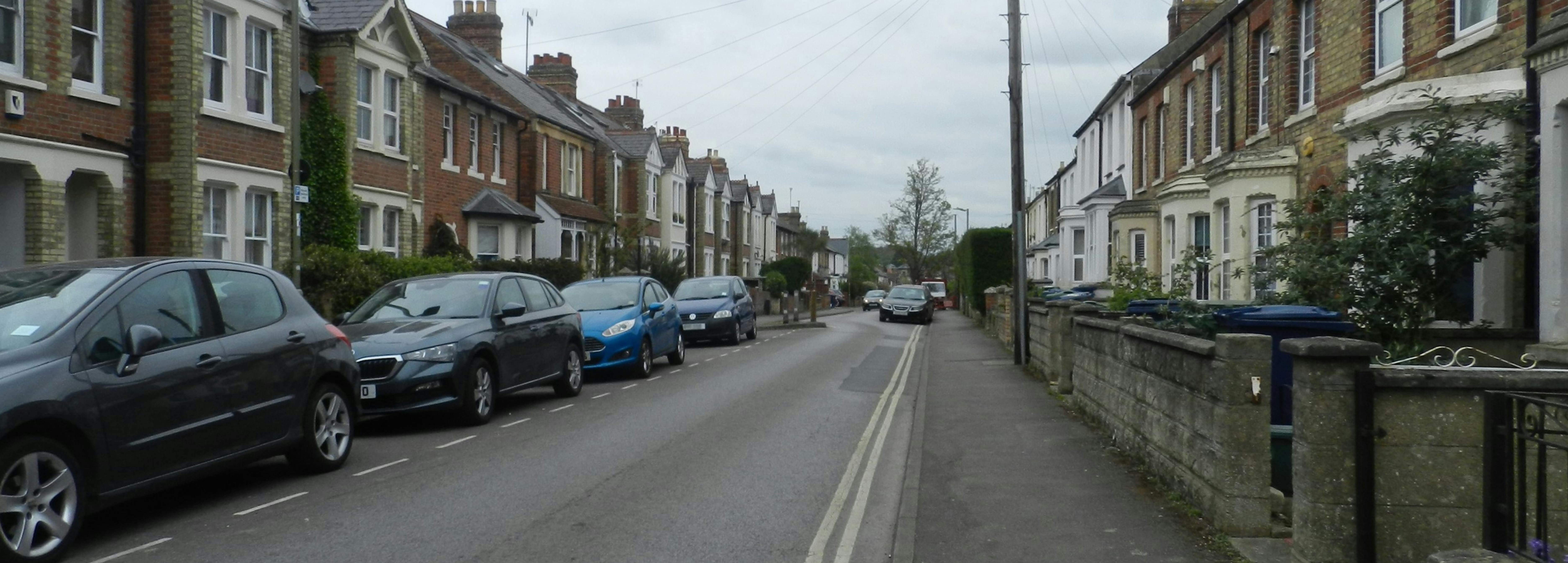East Oxford low traffic neighbourhoods consultation
Consultation has concluded
The consultation has now closed.
Introduction
We are trialling three low traffic neighbourhoods (LTNs) in the Divinity Road area, St Clement’s area, and St Mary’s area of east Oxford under an experimental traffic regulation order (ETRO). These LTNs are collectively known as the east Oxford LTNs and you can read more about them on our website where we also include Frequently Asked Questions.
The formal ETRO consultation survey is now closed. It was open from 20 May to 30 November 2022. A decision on whether to make the trial scheme permanent or remove it will be made by the county council’s cabinet in late 2023.
Anyone can provide feedback on the experimental east Oxford LTNs by contacting the team by emailing eastoxfordltn@oxfordshire.gov.uk.
Supporting information
What is an LTN?
• An LTN is where traffic filters (planters and bollards) are installed in a residential area to improve safety, air quality and congestion levels. These traffic measures help to reduce motor vehicles taking shortcuts through the residential area. The roads within the LTNs will be closed to all through traffic, apart from emergency vehicles and waste services traffic, pedestrians and cyclists. Details of alternative routes for drivers are available on the county council’s website oxfordshire.gov.uk/eastoxfordltns
What is an ETRO?
• An ETRO is a legal process which allows the council to introduce the LTNs as a trial. The ETRO will last for a minimum of six months and a maximum of 18 months.
• If changes are made to the scheme design at any stage during the ETRO, the public consultation period will reset and continue for a further six months.
Why is the council trialling LTNs in the east Oxford area?
East Oxford has a high population of young families and a mix of primary and secondary schools, as well as a large number of children travelling through east Oxford to schools in other parts of the city and outside the city.
The area has direct access links to the city centre and to the southern bypass, both attracting a much higher level of traffic and contributing to slightly poorer air quality than some other areas of the city. There have also been a number of recent cycle casualties in the east Oxford area.
What consultation and engagement has already happened?
The experimental east Oxford LTNs were extensively consulted on throughout 2021. Changes have been made to the scheme design in response to the feedback we received. This includes:
- Reducing the length of the two-way section in Howard Street and providing a contraflow cycle lane.
- Relocating filters on Howard Street and Barnet Street.
- Redesigning the filter on Magdalen Road.
- Some changes to controlled parking zones to avoid making it difficult for residents to find parking spaces.
Where are the traffic filters for east Oxford LTNs?
You can view the filters on the map in the documents section. The filters are in:
- Divinity Road LTN area: DR1 Divinity Road and DR2 Southfield Road.
- St Clement’s LTN area: SC1 Rectory Road (contraflow, cycle way and two-way section) and SC2 Princes Street.
- St Mary’s LTN area: SM1 Circus Road, SM2 Temple Street, SM3 Stockmore Street, SM4 Marston Street, SM5 James Street, SM6 Bullingdon Road, SM7 Leopold Street, SM8 Magdalen Road (two way), SM9 Barnet Street and SM10 Howard Street (contraflow, cycle way and two-way section).
How do the east Oxford LTNs link to wider transport proposals for Oxford?
We need to provide a long-term environment for walking and cycling to flourish, and deliver safer, healthier and more liveable streets. The low traffic neighbourhoods are designed to work together with other transport and travel schemes as part of the countywide Local Transport and Connectivity Plan.
In February 2022, the county council also published updated proposals for traffic filters, an expanded zero emission zone and a workplace parking levy in Oxford. These ‘core transport schemes’ are part of our wider proposals to encourage sustainable travel and reduce congestion in the city and we will be consulting on them later this year.
The six traffic filters proposed as part of the core transport schemes would restrict traffic between 7am and 7pm, every day. Of these, the proposed traffic filters on St Clements and Hollow Way would directly affect the area of east Oxford where we are trialling the LTNs; without the LTN traffic filters in place in Divinity Road, Southfield Road, Rectory Road and Princes Street, the core transport schemes traffic filters would result in even more traffic using these residential streets than at present.
The traffic filters proposed as part of the core transport schemes have therefore been designed to work with the Divinity Road, Southfield Road, Rectory Road and Princes Street LTN traffic filters in place. If these four LTN filters are not made permanent following the trial of the east Oxford LTNs, the core transport scheme proposals would need to be amended to prevent unacceptable traffic increases on these four roads as a result of the St Clements and Hollow Way traffic filters.
Because the core transport schemes have not yet been consulted on, the east Oxford LTN proposals have been designed to work with or without the core transport schemes.
Decision-making
The council will consider evidence and feedback – from the consultation and wider engagement – on the experimental east Oxford LTNs alongside the results of public consultation on the core transport schemes.


